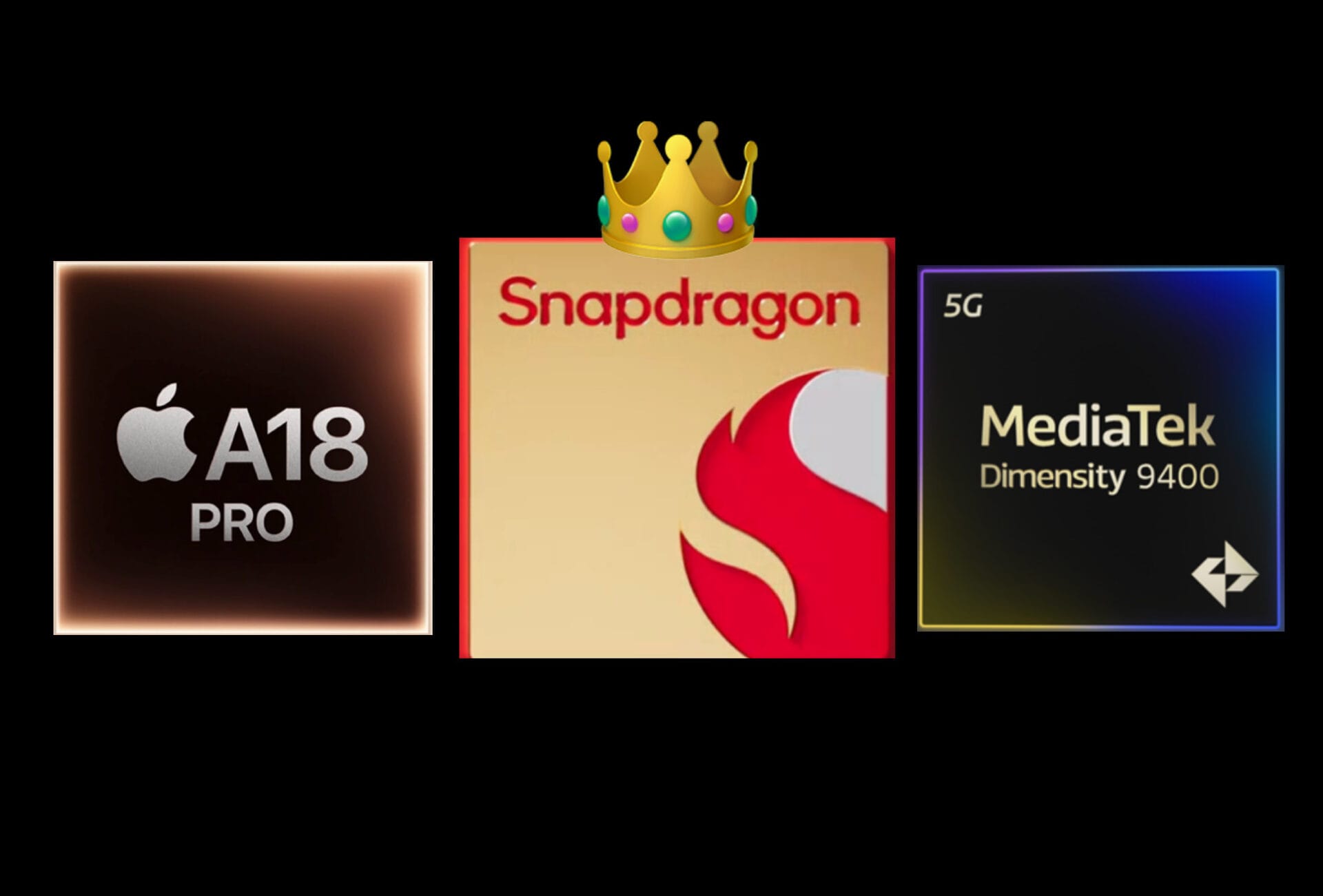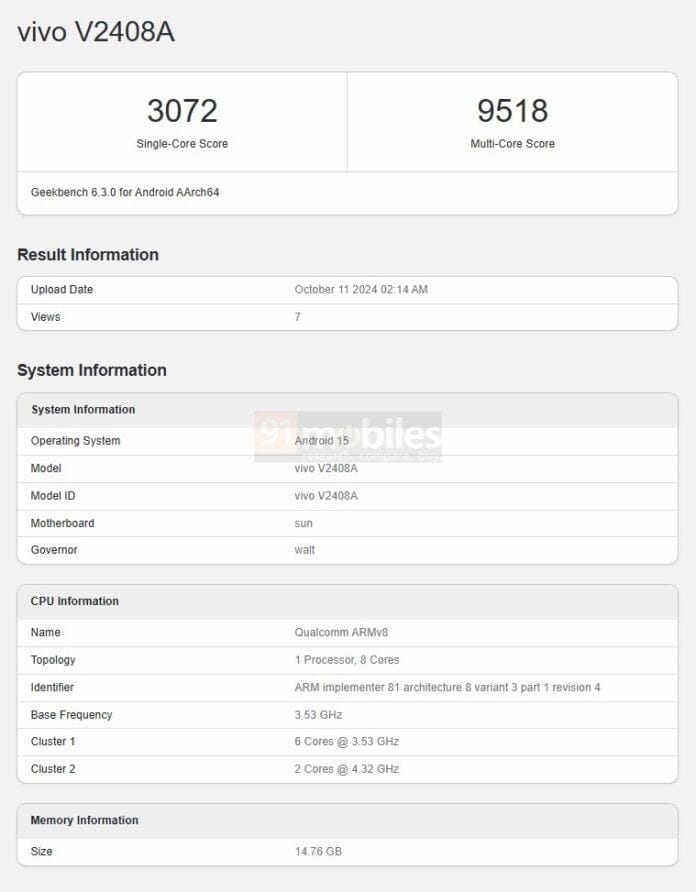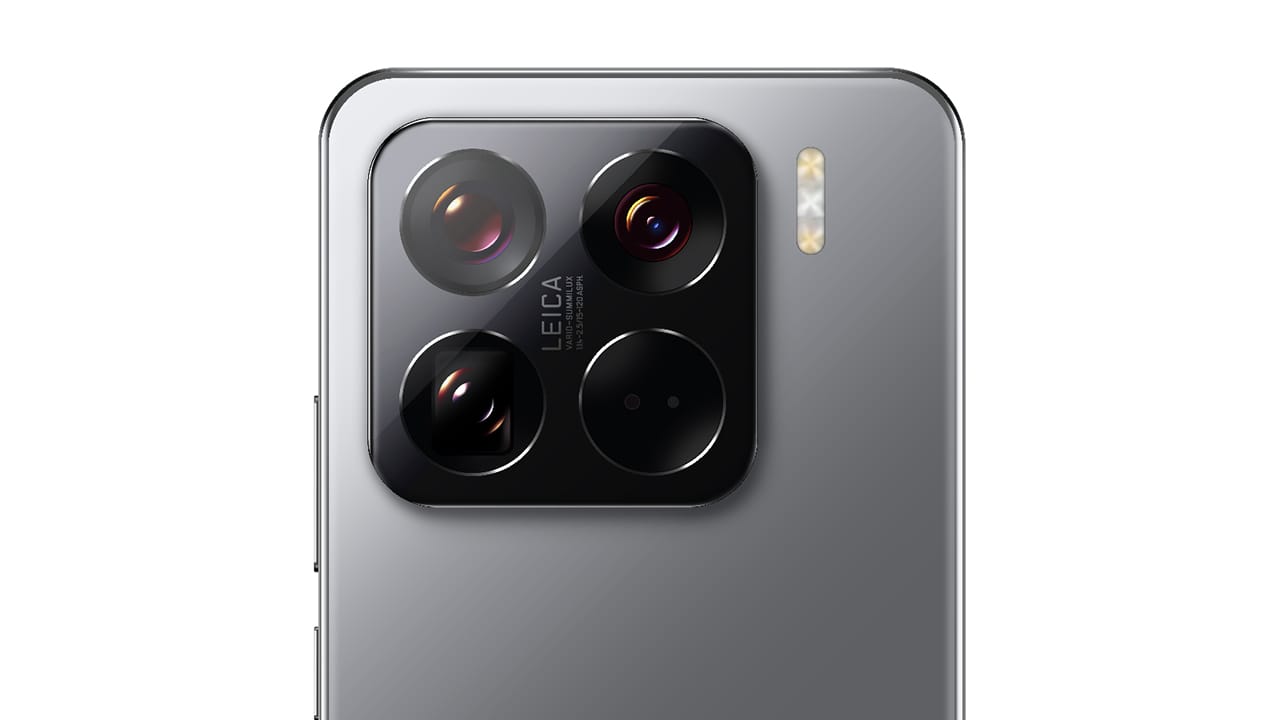If the latest happenings in the smartphone chip scene are any indication, a major chip competition is on the horizon. Apple took the lead with its A18 Pro SoC, followed closely by MediaTek’s Dimensity 9400 which was introduced this month. Now, everyone is looking forward to Qualcomm, which is set to officially announce its Snapdragon 8 Gen 4 SoC during the Snapdragon Summit event.
Benchmarks Surface Online
Benchmarks for all these SoCs have surfaced online, including the unreleased Snapdragon 8 Gen 4, or whatever name Qualcomm decides to give it. As predicted, Apple dominates in single-core performance by a significant margin. In Geekbench 6, the A18 Pro achieves an impressive score of 3,400 points, whereas the Dimensity 9400 scores around 2,800—an improvement over last year’s 9300+, but still far behind Apple. Leaked benchmarks for the Snapdragon 8 Gen 4 indicate it surpasses the Dimensity 9400 in single-core performance with 3,100 points, yet it still falls short compared to the A18 Pro.
Multi-Core Scores Flip the Script
When it comes to multi-core performance, the situation changes quickly. Despite having the fewest cores, the A18 Pro ranks at the bottom with a score of approximately 8,700 points in Geekbench 6. Meanwhile, the Snapdragon 8 Gen 4 impressively crosses the 10,000-point mark in early leaks, hitting 10,052. The Dimensity 9400 finds its place between Apple’s and Qualcomm’s solutions, scoring just above 9,000 according to a recent assessment by Geekerwan.
Efficiency Matters Too
Of course, it wouldn’t be right to evaluate smartphone SoCs without looking at efficiency. According to Geekerwan’s data, Apple’s A18 Pro clearly outperforms the Dimensity 9400 in this area. Given the remarkably high multi-core scores of the Snapdragon 8 Gen 4, it might not be the most efficient chip, especially since previous Snapdragon models have struggled against Apple concerning CPU efficiency. Nevertheless, this time could be different, but I’m not ready to make any assumptions just yet.
Geekerwan, Geekbench.


















